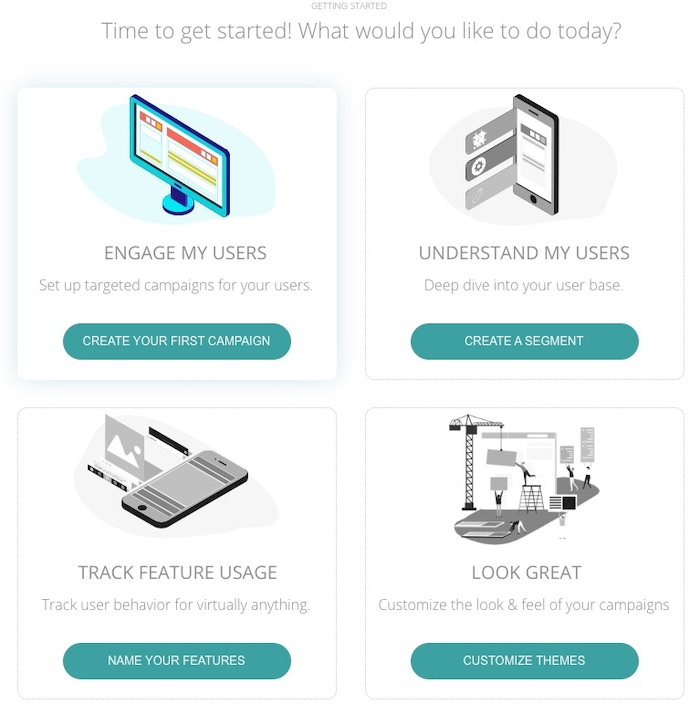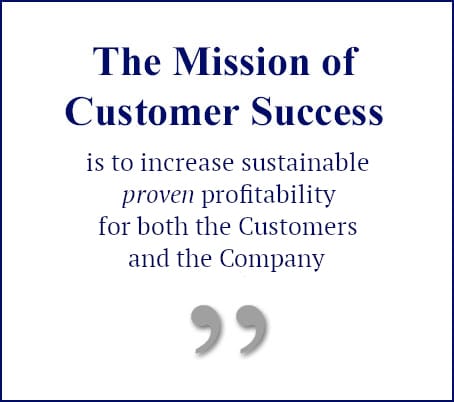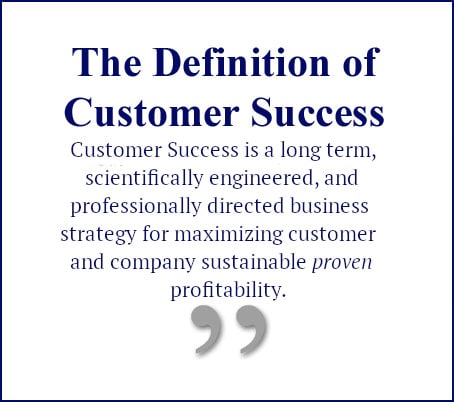 Many companies these days are talking about being “more human.” My friend and colleague Sangram Vajre, Chief Evangelist and Co-Founder at Terminus, predicted 2018 would be about “human-to-human” marketing. After all, people buy from other people. It’s easy to forget this point amidst the loud noise of artificial intelligence. I could also say the same the about why users leave your company, which often come down to the good and bad experiences they have with your people. The point is that relationships matter and can often mean the difference between loyalty and churn.
Many companies these days are talking about being “more human.” My friend and colleague Sangram Vajre, Chief Evangelist and Co-Founder at Terminus, predicted 2018 would be about “human-to-human” marketing. After all, people buy from other people. It’s easy to forget this point amidst the loud noise of artificial intelligence. I could also say the same the about why users leave your company, which often come down to the good and bad experiences they have with your people. The point is that relationships matter and can often mean the difference between loyalty and churn.
In a recent study, Accenture found that more than half of consumers have switched providers in the past year due to poor service, costing US companies an estimated $1.6 trillion. In the same study, 83% said they prefer to deal with human beings to solve customer issues and obtain advice and direction. And that’s great because I’ve been watching companies in multiple industries aim to meet that expectation.

My initial reaction to this is that, in order to provide a truly personalized (read: human) experience for their users, companies have to be focused on just that: users—the people actually using the product—rather than grouping them together as “customers” or “accounts.” Without visibility into and understanding of who your users are, what their individual goals are, and how they want to be engaged with, the human element companies are striving for comes out as false and is bound to leave expectations unmet.
To drive higher user adoption and success, companies must put users at the forefront of their business operations, especially those that want to generate long-term profits and grow. In fact, a joint study by SAP, Siegel+Gale, and Shift Thinking discovered that user-centric companies are more profitable than those that are not.
You cannot be successful in the age of “human interactions” without being user-focused. But how can companies get better at understanding and interacting with individual users and provide more relevant, human experiences?
Companies must know and understand the user to know how to serve them.
The user is at the heart of your customer relationship from the beginning, so if you want to know what they want but aren’t sure how to find out, ask.
I’m sure your first thought is, “But how do I scale asking?” A great question, but I promise you it’s doable, and surveys are a great way to get it done. Think beyond just NPS or CSAT surveys and consider how you can use surveys more creatively to ask the right questions that uncover valuable information about your users and drive a more personalized experience around their specific outcomes. Here’s an example of this in practice:
 Find out what obstacles or challenges they face, what business goals they are looking to achieve, what method of engagement they prefer, and nurture that. Based on that information, you can determine more personalized and meaningful interactions that help users achieve their goals and understand how your solution will help them get there. Working in this way, you’ll see positive results in terms of user happiness, user adoption, and customer success. Remember, users are used to being nurtured in the buying phase, so why do we stop nurturing them once they become customers?
Find out what obstacles or challenges they face, what business goals they are looking to achieve, what method of engagement they prefer, and nurture that. Based on that information, you can determine more personalized and meaningful interactions that help users achieve their goals and understand how your solution will help them get there. Working in this way, you’ll see positive results in terms of user happiness, user adoption, and customer success. Remember, users are used to being nurtured in the buying phase, so why do we stop nurturing them once they become customers?
Organizational stakeholders must understand and agree on what the users’ needs are and how to deliver value to them. For user-centric customer success teams, this means you can determine how your product can serve them, like where a suggested feature or workflow could help them solve a particular pain point.
One of the main reasons customers churn is that they haven’t achieved their Desired Outcome (Required Outcome + Appropriate Experience), whether that be during onboarding, a poorly executed product release, issues due to bad-fit, etc. But it’s not only about lost existing business. It’s about potential lost new business as well.
A user can negatively advocate for you. Studies have found that only 1 out of 26 unhappy customers will actually complain. The rest churn, and will tell 9-15 other people about their bad experience.
For these reasons, it’s vital you get to know your users so you can personalize their experience, deliver the value they expect, and empower them to achieve the business outcomes that are important to them.
Companies must nurture the relationship with the user to build loyalty and advocacy, and drive growth.
 Empathy is key. Showing empathy to users is more than understanding them. It’s connecting with them on an emotional level. Show users you care about and appreciate them and their continued success with your solution. Actively listen to them, accept feedback, and let them know when their feedback has been satisfied (this is called closing the feedback loop). Be open-minded. Be curious about them. And always be ready to help. Here are a few tried and true ways to nurture user relationships:
Empathy is key. Showing empathy to users is more than understanding them. It’s connecting with them on an emotional level. Show users you care about and appreciate them and their continued success with your solution. Actively listen to them, accept feedback, and let them know when their feedback has been satisfied (this is called closing the feedback loop). Be open-minded. Be curious about them. And always be ready to help. Here are a few tried and true ways to nurture user relationships:
Use the data. Instead of scheduling “check-in” calls with your users, use the product and user data you’re collecting to inform when a check-in is necessary. Data points like login activity, sentiment (via NPS or CSAT scores), engagement, product and feature usage, and others (I could go on) help you get a clearer, more complete picture of your users. Rather than checking in on the user arbitrarily, check in on their data. I’d even recommend setting up alerts for when the data points you’re collecting hit certain thresholds that may indicate an issue or significant fluctuation with that user.
Acknowledge their wins. When your customer does something positive that you didn’t expect or reaches an exciting milestone (like completing onboarding, using a new feature, etc), celebrate and reward that achievement. Consider acknowledging these wins by:
- Sending badges, gift cards, or other swag
- Delivering a “high-five” via email or in-app
- Inviting them to write a blog post or speak at an event to discuss their success and give advice to other users who most likely share similar aspirations
Integrate the user voice into everything. Monitoring the right data and collecting feedback and voice of the customer helps you understand how a user’s needs and expectations evolve over time. Make it easy for your users to provide feedback. And, most importantly, make sure you act on this feedback. When you act on their feedback, you are letting them know you care about optimizing their experience and in return, they will reward you with loyalty and advocacy.
Act in a timely manner. Not only do you need to close the feedback loop, but you also need to do it quickly. When a user asks a question or voices a concern, they expect a fast response and quick resolution. The best thing you can do is to respond immediately.
Be proactive. Anticipate your users’ needs and check in with them when you notice issues as indicated by your data. If you can avoid it, don’t wait for a user to reach out first with a problem.
Ultimately, to stay competitive, your business needs to make user-centricity the focus of your success strategy. Ensure you think “user first” in every aspect of your business, so you can create exceptional experiences that ensure you are driving value and helping them achieve their business outcomes.
By Rachel Orston
 Rachel Orston, CEO of UserIQ, is a customer success pioneer with deep experience launching and marketing new products for some of the world’s most recognizable technology brands including Microsoft, Sony and IBM. Her experience includes driving customer success and SaaS growth across IBM’s global SaaS portfolio. Today, Rachel leads UserIQ in helping companies foster growth and deepen customer engagement.
Rachel Orston, CEO of UserIQ, is a customer success pioneer with deep experience launching and marketing new products for some of the world’s most recognizable technology brands including Microsoft, Sony and IBM. Her experience includes driving customer success and SaaS growth across IBM’s global SaaS portfolio. Today, Rachel leads UserIQ in helping companies foster growth and deepen customer engagement.








